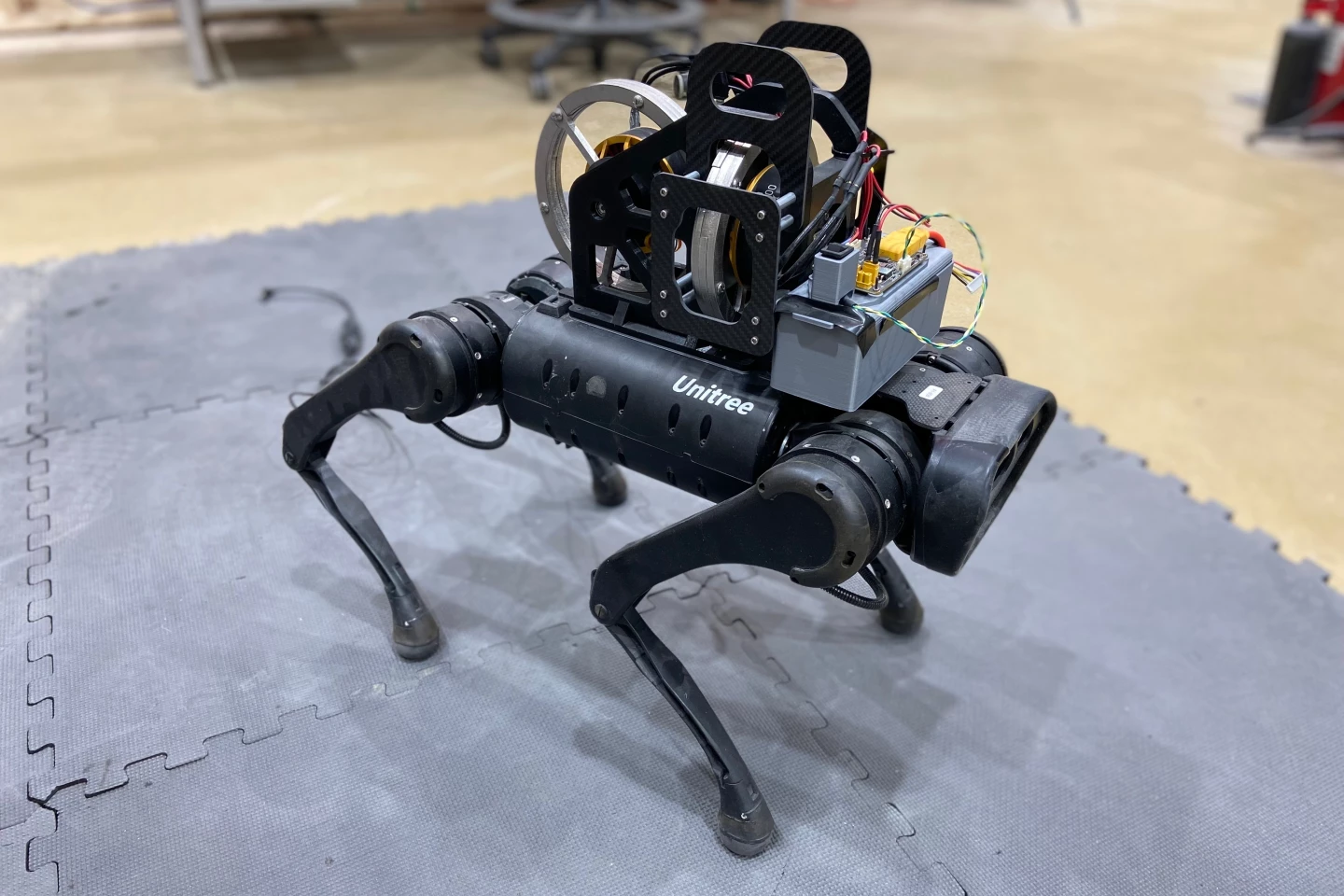While quadruped robots may surpass their wheeled counterparts at traversing rough terrain, they still aren't able to maintain their balance when moving along narrow ridges. That could change, though, as scientists have devised a method of allowing them to walk along a balance beam.
Led by Asst. Prof. Zachary Manchester, a team of engineers at Carnegie Mellon University's Robotics Institute started out with a commercially available Unitree A1 robot. They proceeded to mount two devices known as reaction wheel actuators on the bot's back. Called RWAs for short, these tools are commonly used to adjust the angular momentum of satellites.
"You basically have a big flywheel with a motor attached," said Manchester. "If you spin the heavy flywheel one way, it makes the satellite spin the other way. Now take that and put it on the body of a quadruped robot."
One of the RWAs controls the bot's pitch axis, while the other controls its roll axis – both are housed in a single 4.3-kg (9.5-lb) module. It doesn't matter which of the robot's feet are in contact with the beam at any one time, as the RWAs simply (and automatically) compensate for any changes in its center of balance.

In lab tests, not only was the robot able to walk the ~3-meter (9.8-ft) length of a 6-cm (2.4-in)-wide wooden beam, but it also withstood attempts to kick it over. When dropped upside-down from a height of about half a meter (1.6 ft), it was even able to flip itself around in mid-air and land on its feet like a cat.
Manchester believes that such added functionality will help bring quadruped robots out of the lab and into real-world usage.
"Quadrupeds are the next big thing in robots," he said. "I think you're going to see a lot more of them in the wild in the next few years."
The team will be presenting a paper on their research this June at the 2023 International Conference on Robotics and Automation in London. You can see the modified Unitree A1 in balance-beam-walking action, in the following video.
Source: Carnegie Mellon University





